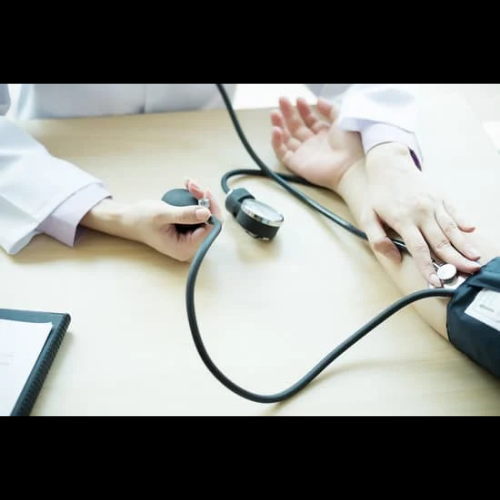Table of Contents
Cardiovascular diseases (CVDs) are one of the top causes of death worldwide, therefore understanding the illnesses that impact our blood vessels is critical for staying healthy. Among the many cardiovascular illnesses, arteriosclerosis and atherosclerosis are two prevalent synonyms that are frequently used interchangeably.
Arteriosclerosis vs Atherosclerosis: Arteriosclerosis is artery hardening, while atherosclerosis is plaque buildup, narrowing arteries, restricting blood flow.
However, they pertain to various conditions that have different effects on the blood vessels. Anyone wishing to improve their vascular health should understand the differences between arteriosclerosis and atherosclerosis, as well as their symptoms, risk factors, complications, and treatment choices.
In this post, we will look in depth at these two circumstances, how they differ, and why it is important to understand the differential.
What is arteriosclerosis?
Arteriosclerosis is a broad word that describes the thickening, hardening, and loss of flexibility of the artery walls. Arteries are blood veins that transport oxygen-rich blood from the heart to various regions of the body; in order to operate properly, their walls must be flexible and elastic. However, aging, high blood pressure, diabetes, and smoking can cause the arteries to harden, making it difficult for blood to flow through them.
Arteriosclerosis is classified into several kinds, including medial calcific sclerosis (which arises when calcium deposits accumulate in arterial walls) and atherosclerosis. Arteriosclerosis primarily affects larger arteries and becomes more common as people age.
Causes of arteriosclerosis
Arteriosclerosis is largely caused by a number of events that might harm the arteries over time:
1. Aging: As we age, the smooth muscle tissue in our arteries gradually loses flexibility, causing the arterial walls to thicken.
2. High Blood Pressure (Hypertension): Chronic high blood pressure stresses the artery walls, causing plaque accumulation and stiffness.

3. High Cholesterol: High cholesterol levels can cause fatty deposits in the walls of arteries, making them less flexible.
4. Diabetes: High blood sugar levels can damage blood vessels and cause arterial walls to harden.
5. Smoking: Cigarette smoke contains chemicals that damage blood vessels and contribute to arteriosclerosis.

Symptoms of arteriosclerosis
Arteriosclerosis typically develops slowly over several years, and symptoms may not appear until the ailment has progressed to an advanced state. In its early stages, there may be no obvious indicators, but with time, the diminished flexibility of the arteries can develop to issues such as:
Chest pain (angina): This occurs as the cardiac arteries stiffen and struggle to transmit oxygen-rich blood to the heart muscle.
Shortness of breath: As blood flow decreases, the heart’s ability to pump blood may suffer.
High blood pressure: The tightened arteries cause the heart to work harder, resulting in high blood pressure.
Leg discomfort and cramping: This can occur when the arteries in the legs stiffen and fail to give adequate blood flow to the muscles.
Complications from Arteriosclerosis
As arteriosclerosis advances, it can cause a number of major health complications:
A heart attack can occur when the heart’s blood supply becomes stopped or restricted.
Stroke: A shortage of blood supply to the brain caused by stiffened arteries can lead to a stroke.
Renal damage: A reduction in blood supply to the kidneys can result in renal disease or even kidney failure.
Peripheral artery disease (PAD): Arteriosclerosis in the leg arteries can result in pain and impaired circulation in the legs.
What is Atherosclerosis?
Atherosclerosis is a kind of arteriosclerosis that refers to the accumulation of fatty deposits (plaque) within the arteries. These fatty deposits are composed of cholesterol, calcium, and other chemicals that harden and constrict the arteries over time. Atherosclerosis can occur in any artery in the body, including the coronary, carotid, and peripheral arteries. It is a major cause of cardiovascular disease, stroke, and peripheral artery disease.
Causes of Atherosclerosis
Atherosclerosis occurs when the inner walls of the arteries are damaged owing to high cholesterol, high blood pressure, smoking, and other risk factors. The body attempts to cure these damaged areas by directing cholesterol to the location, where it collects and forms plaque. Over time, this plaque may thicken and harden, narrowing the arteries and restricting blood flow.
Common risk factors for atherosclerosis are:
1. High Cholesterol: Elevated levels of low-density lipoprotein (LDL) cholesterol (often known as “bad” cholesterol) cause plaque development in the arteries.
2. Hypertension: High blood pressure damages the arteries, which increases the probability of plaque development.
3. Smoking: Cigarette smoke contains compounds that harm the artery walls, hastening plaque development.
4. Diabetes: High blood sugar levels can damage blood vessels and cause plaque to build.
5. Obesity and Lack of Physical Activity: These variables contribute to elevated cholesterol and blood pressure, both of which are risk factors for atherosclerosis.
Symptoms of atherosclerosis
Atherosclerosis usually advances without symptoms until blood flow is severely reduced. However, depending on the damaged artery, the following symptoms can occur:
Chest pain (Angina): When atherosclerosis damages the coronary arteries, it can cause chest discomfort, which is an indication of possible heart disease.
Heart attack: If a plaque ruptures and develops a blood clot, it can block an artery and cause a heart attack.
Stroke: A blockage in the carotid arteries (which supply blood to the brain) can cause a stroke.
Peripheral artery disease (PAD): Atherosclerosis in the leg arteries can cause pain, numbness, or cramping, particularly during exercise.
Kidney damage: Atherosclerosis in the renal arteries can impair blood flow to the kidneys, resulting in kidney disease.
Complications of Atherosclerosis
The main complication of atherosclerosis is the growth of plaques in the arteries, which can limit or totally block blood flow. These obstructions can have a number of dangerous effects.
Heart Attack: A blood clot formed on a burst plaque can fully block a coronary artery, cutting off oxygen supply to the heart muscle and resulting in a heart attack.
Stroke: When a plaque or blood clot goes to the brain, it can block an artery, resulting in a stroke.
Peripheral Artery Disease (PAD) occurs when plaque accumulates in the arteries of the legs, causing acute pain and and even gangrene in the extremities.
Atherosclerosis weakens the artery walls, which can result in the creation of an aneurysm – an abnormal bulge in the artery that can rupture and cause life-threatening internal bleeding.
Arteriosclerosis and Atherosclerosis: Key Differences
While arteriosclerosis and atherosclerosis have certain similarities, they are separate conditions with significant differences:
1. Definition
Arteriosclerosis is the thickening and hardening of the artery walls caused by a variety of causes such as aging, high blood pressure, and diabetes.
Atherosclerosis: A kind of arteriosclerosis in which plaque (cholesterol, lipids, and other substances) accumulates within the arterial walls, causing narrowing and restriction of blood flow.
2. Causes:
Arteriosclerosis is mostly caused by aging, high blood pressure, diabetes, and lifestyle habits.
Atherosclerosis is caused by the buildup of cholesterol, fatty substances, and other deposits in the artery walls, which is frequently exacerbated by risk factors such as high cholesterol, smoking, and hypertension.
3. Effect on Arteries:
Arteriosclerosis: Thickens and hardens arteries, diminishing their flexibility.
Atherosclerosis causes plaque formation inside the arteries, which narrows them and can block blood flow.
4. Risk factors:
Arteriosclerosis is more closely related with aging and overall vascular health.
Atherosclerosis is closely associated with high cholesterol, smoking, high blood pressure, diabetes, and an unhealthy lifestyle.
5. Symptoms:
Arteriosclerosis symptoms can include chest pain, shortness of breath, elevated blood pressure, and leg cramps.
Atherosclerosis has similar symptoms, but it can also cause stroke, heart attack, and peripheral artery disease (PAD).
Understanding and preventing these conditions is critical
Knowing the distinction between arteriosclerosis and atherosclerosis is critical for knowing how each ailment affects the body and what can be done to avoid or treat it. Early detection and management can significantly reduce the risk of serious consequences such heart attacks, strokes, and kidney disease.
Preventive Measures
1. Healthy Diet: A diet reduced in saturated fats, trans fats, and cholesterol will help lower your risk of atherosclerosis and arteriosclerosis.
2. Regular Exercise: Physical activity promotes healthy blood pressure and cholesterol levels while also improving overall cardiovascular health.
3. Quit Smoking: Smoking hastens both arteriosclerosis and atherosclerosis. Quitting smoking lowers your risk of developing these illnesses.
4. Manage Blood Pressure and Cholesterol: Regularly monitoring and maintaining appropriate blood pressure and cholesterol levels can help to avoid the progression of these illnesses.
5. Manage Diabetes: Keeping blood sugar levels under control will help avoid blood vessel damage and lower the risk of arteriosclerosis and atherosclerosis.
Treatment Options:
Statins, antihypertensives, and blood thinners are frequently used to treat the symptoms of these illnesses and prevent complications.
Lifestyle Changes: Maintaining a heart-healthy diet, getting regular physical activity, and lowering stress are all important in controlling cardiovascular problems.
Surgical Interventions: In severe cases of atherosclerosis, treatments such as angioplasty, stent implantation, and bypass surgery may be required to restore blood flow.
Conclusion

Both arteriosclerosis and atherosclerosis are serious disorders that can have a substantial influence on your cardiovascular health, but they have distinct causes, symptoms, and therapies. Understanding the fundamental distinctions between the two will help you take proactive efforts to lower your risk of getting these diseases and live a better life.
